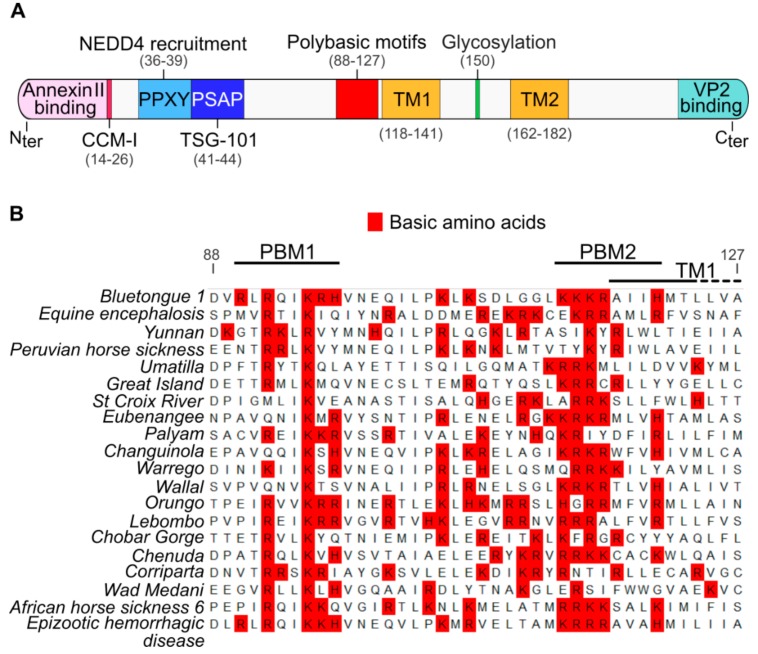Figure 1.
Identification of membrane proximal polybasic motifs that are conserved in the NS3 proteins of the Orbivirus genus. (A) Diagram presenting the main identified domains in the NS3 protein. From the N-terminal (Nter) to the C-terminal (Cter), the NS3 protein possess a Annexin II protein-binding motif, two late domains (PPXY/PSAP) binding respectively the E3 ubiquitin-protein ligase NEDD4 protein and the TSG-101 protein, a member of the ESCRT proteins family [12,13]. All these cellular interactors mediate virus release through budding. The NS3 protein also possess two transmembrane domains (TM1 and TM2) and a glycosylation site located between the TM [26]. The NS3 protein also binds the viral protein VP2 through a C-terminal motif [27]. The N-terminal coiled-coil motif I (CCM-I) is also presumed to be involved in NS3 protein oligomerization [10] (B) Multiple sequence alignment of all known Orbivirus NS3 amino acid sequences adjacent to the TM1 domain. Basic amino acids are highlighted in red. We named PBM1 and PBM2 the two most conserved polybasic domains. Amino acids numbering is based on the NS3 sequence of the BTV-1. Genbank accession numbers of each sequence are available in the material and methods section.

